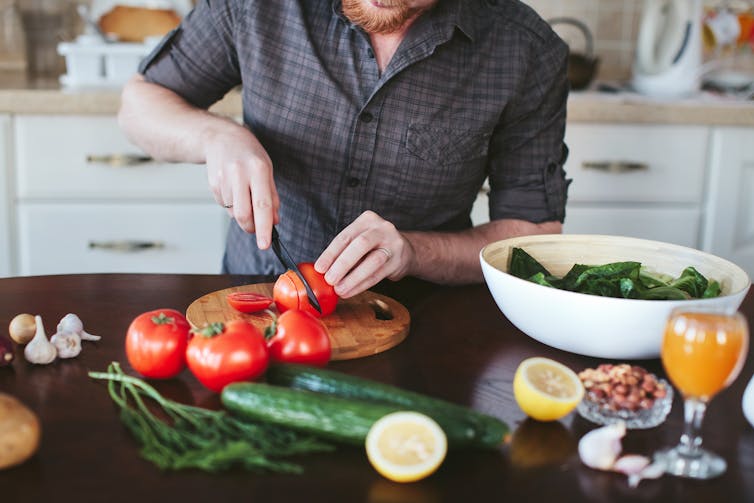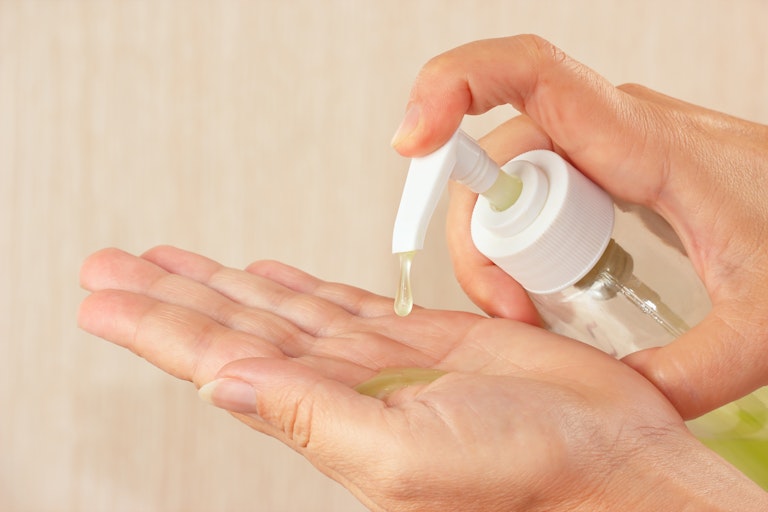They’re everywhere in hospitals, travellers’ backpacks and the aisles of pharmacies in winter, but do we really need to use alcohol-based hand sanitisers? And what should we make of the marketing claims they’re needed to kill germs?
Our research found we touch our face up to 23 times each hour and, of these, ten touches are to our eyes, nose or mouth. So while touching your face with contaminated hands you could be contaminating your hands or yourself with many infections, including influenza, the common cold and diarrhoeal infections. In fact, contaminated hands can spread most infectious diseases.
In developing countries, diarrhoeal diseases are still the biggest killer of children under five years old. The simplest way to prevent bacteria, viruses and parasites that cause deadly diarrhoeal disease is handwashing with clean water and soap.
In industrial nations like ours, diarrhoeal disease is mostly spread by eating contaminated food – usually from unwashed hands during preparation, serving or eating meals.
There are at least 300,000 germs on our hands at any one time. Most of these have an important role in keeping the outer dermal layer of your skin healthy. There will also be germs that do not normally reside on your hands and these will come and go during the day without causing infections.
For pathogens (germs that cause infection) to actually cause infection, your hands must: (i) pick up sufficient numbers; (ii) these must be alive; (iii) be introduced into your body (through your mouth, nose or eyes); and (iv) you must be susceptible to the infection.
The common pathogens that find their way to your hands during the day could include diarrhoeal viruses and gastrointestinal bacteria, common viral respiratory infections and viruses that cause skin infections.

So how often should we remove these pathogens?
Hygiene has improved since the 19th century, but since the development of vaccinations and antibiotics, handwashing lost its celebrity status. Handwashing is making a welcome comeback, but the message we need to “kill” the germs is inaccurate and confusing.
In a hospital setting, health-care workers use medicated soap and water wash or alcohol-based hand rub to remove germs and kill pathogens. Alcohol-based hand rub has the added bonus of providing an additional 20 minutes of residual action on the surface of the health workers’ hands to keep pathogens from multiplying to a level that can cause infection in vulnerable patients.
But in the general community, soap and water removes pathogens. We don’t need to “kill” them to be safe; removing them keeps us safe. Germs start growing or finding their way back onto your hands immediately after handwashing.
When should you use alcohol-based hand rub?
Alcohol-based hand rub cannot penetrate organic material that makes your hands visibly dirty or sticky. So always use a soap and water wash after going to the toilet and when your hands are visibly dirty or sticky.
All other times, when your hands are visibly clean and feel clean, hand rub can be used instead of soap and water washing. But hand rub used after handwashing will increase the penetration of the active ingredients of the rub into the skin and increase the risk of dry and cracked hands.
Hands should be washed before preparing and eating food, and after touching our noses. If you don’t have access to soap and water, alcohol-based rubs are a convenient way of removing pathogens. But again, removing not “killing” germs is what you need to achieve.
Public transport has now become air-conditioned, providing a better environment for keeping respiratory and diarrhoeal viruses on hand rails and seats for longer. If you touch your face (as most of us do), you might like to use a hand rub after leaving the train or bus, as hand hygiene can reduce the spread of respiratory illnesses by 20% and by 30% for gastrointestinal infections.

Remember, though, inside a closed train or bus flu viruses can spread up to 2.5 metres from a passenger who is in the very early stages of flu, just from breathing or talking. So sometimes there’s no escaping these bugs without vaccination.
Remember, rubbing your hands together for 15 or more seconds while using soap and water effectively removes pathogens. Don’t forget also to focus on your fingertips and around the base of your thumbs. Drying your hands after handwashing removes more pathogens.
While alcohol-based hand rub is necessary for health workers and is convenient for cleaning hands while we travel, it shouldn’t be used on visibly dirty or sticky hands.

